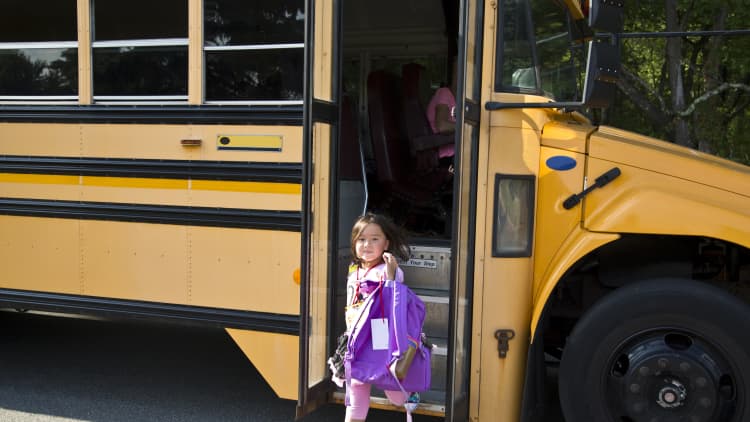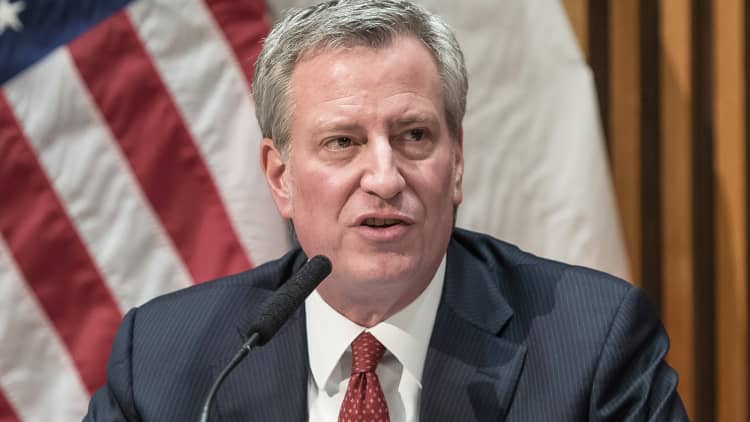"I hope they figured out something better," said New York City parent Crystal Berroa, 27, of her expectations for distance learning this fall.
For Berroa, who lives in a homeless shelter with her three children, ages 6, 4, and 3, managing her older daughter's schoolwork, on top of her younger children's needs and her own job, has been a nearly impossible task.
Her daughter, now entering first grade, received an iPad from the city's Department of Education, which is distributing 300,000 such devices to students in need, but it often malfunctioned.
"The ones that are free don't work," she said.
More from Personal Finance:
Will schools reopen in the fall? Here’s what’s at stake
Families may opt for public or private school based on reopening
New York City's private schools brace for an uncertain fall
In the fall, Berroa will rely on her mother for child care so she can commute to a job that is 40 minutes away. That will make troubleshooting tech issues with her daughter's schooling much more difficult.
Still, she says she prefers distance learning to an in-person education while coronavirus continues, since her youngest son suffers from asthma.
"It's not worth it if one of them gets sick," she said. "Why even take the risk?"
Yet Berroa said she knows that children from families in similar circumstances may not have as safe an environment for learning outside of a traditional classroom.

"How is the school going to monitor the well-being of the child?" she asked. "Not every kid has a stable home life.
The thought of that concerns me," Berroa added. "How are they going to check in?"
Across the country, school reopening plans threaten to widen the divide between the haves and have-nots. But this is perhaps most pronounced in New York City.
The nation's largest public school system won't fully reopen this fall, according to New York Mayor Bill de Blasio.
Even before the pandemic, disparities existed.Randi Levinepolicy director at Advocates for Children of New York
The system, which serves around 1.1 million students in 1,866 schools, will use a combination of in-person class and remote learning, he said.
Last year, roughly 1 in 10 students in New York were homeless, the equivalent of about 114,000 children living in shelters or doubled up with other families in small apartments, according to nonprofit Advocates for Children of New York, a member of the Family Homelessness Coalition. (In the entire U.S., the number of homeless children enrolled in public schools is closer to 1.5 million.)
For these students, having less space for learning or limited access to the internet or computers — in addition to greater issues with food, security and lack of parental support — make distance learning particularly hard.
"Even before the pandemic, disparities existed," said Randi Levine, a policy director at Advocates for Children of New York.

Fewer than a third of homeless students — either living with others or in shelters — are reading proficiently and only 60% graduate from high school, according to Levine.
"This is a group of students that were already behind, and the move to remote learning will only make them even more behind," said Raysa Rodriguez, an associate executive director at the Citizens' Committee for Children, also a member of the Family Homelessness Coalition.
Research by the Collaborative for Student Growth at NWEA, a national nonprofit that assesses learning, found that school closures due to Covid-19 will likely result in substantially lower achievement levels.

The Citizens' Committee is advocating for a prioritization of in-person teaching — "to the extent that there will be in-person, priority should be given to those in fragile housing," Rodriguez said.
"Their cramped and crowded living spaces aren't conducive to focusing on schoolwork," she added.
"The city's school reopening plan has not made adequate accommodations for these students and put their families in impossible situations."


